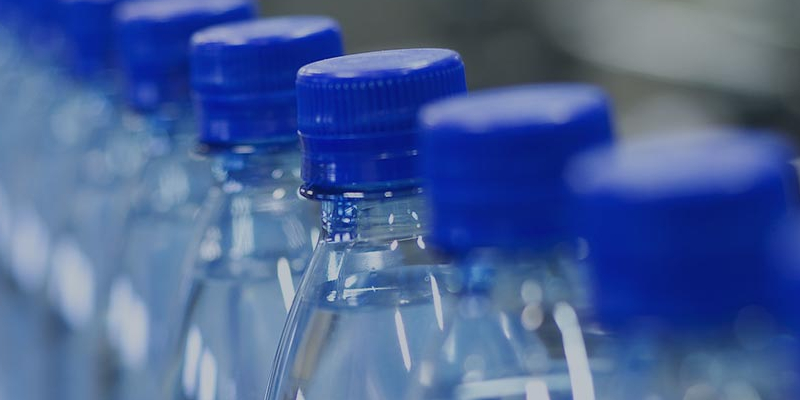Posted on Nov.6th, 2018, | By Candy, WayKen Marketing Manager
Plastic fabrication is an integral and crucial aspect of the plastic industry and has been there for several years. It includes many different fabrication methods which are discussed under this blog.
Plastic fabrication is the designing, manufacturing, and assembling of plastic products via a number of different processes. Custom plastic fabrication includes tasks such as testing new types of plastics, engineering new plastic products and acquiring state-of-the-art machines to fabricate plastics better and faster.
1.Blending/Compounding
Compounding is one of plastic fabrication process under which two or more plastics are first melted and formed into a mixture/blend. Once formed, they are then made into new shapes. Blending requires compounding plastics to be mixed with precise specifications and quantity to make sure that the final product is fabricated as needed. Just like metal alloys, compounding can be used to improve the performance/characteristics of the final product. Some of the most common plastic compounds are;
- Basin Resin
- Blowing agents
- Purge compounds
- Flame-retardants
2. Molding
Molding is one of the oldest fabrication processes that are still under effective use by many custom plastic fabricators. Injection molding, rotational molding, and blow molding are all types of molding process by which the plastics are fabricated.
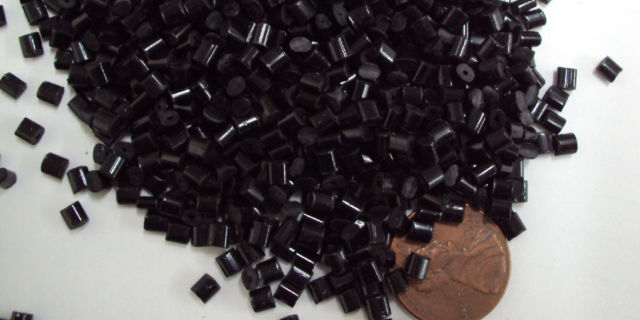
Small plastic pellets used in the molding process. They come in all different sizes and colours
- Injection molding
Injection molding is by far the most versatile molding technique out there. Injection molding incorporates different size of pressers which are dependent over the pressure and tonnage of the product. Injection molding can make big parts such as plastic car parts as well as small plastic components for surgical applications. Injection molding is a bit more expensive plastic molding technique and is only used for the manufacture of plastics requiring a high melt index.
- Compressed molding
The name of this molding pretty much explains itself. The heated plastic is placed inside a heated mold and is then compressed using high power pressers. Curing is followed to make sure that the product maintains its integrity and do not deform. Compressed molding is ideal for high-strength compounds such as thermosetting resin.
- Blow Molding
Plastic blow molding is similar to that of glass molding. A parison is first inflated with air. This air is then pushed against the plastic mold of the desired size. Once the mold is cooled, the plastic is ejected. Blow molding is pretty much straightforward and linear and can rapidly fabricate high volume, one-piece hollow objects. Plastic bottles, fuel tanks, and other cavity-based plastic components are mostly made via blow molding
- Rotational molding
Rotational molding uses the rotational movement and high temperatures to coat the inside of a mold layer by layer which eventually forms the part. The constant rotation creates high centrifugal forces resulting in even-walled products. Rotation molding is used to make large hollow containers. Therefore, the rotation is not very fast. However, this process is economical for certain products and at times is cheaper than other types of plastic molding processes. A hollow plastic component such as buoys, fuel tanks, and canoes are all made via rotational molding. Another advantage of rotational molding is that there is very less waste material since the excess or run off plastic can be immediately used back in the fabricator.
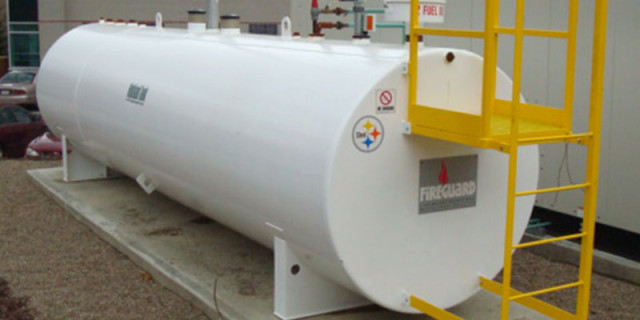
Plastic tank like the one shown above are manufactured by rotational molding
3.Plastic Extrusion
Plastic extrusion is used to make plastic sheets, tubes, and pipes. Under this method, plastic is first melted and made into a pellet. Once formed into small pellets, they are then forced through a die. Many manufacturers prefer this method due to its speed, sturdiness, and replicability. Plastics fabricated using this method can also endure stress better than other types of fabricated plastics since extruded plastics do not have seams.
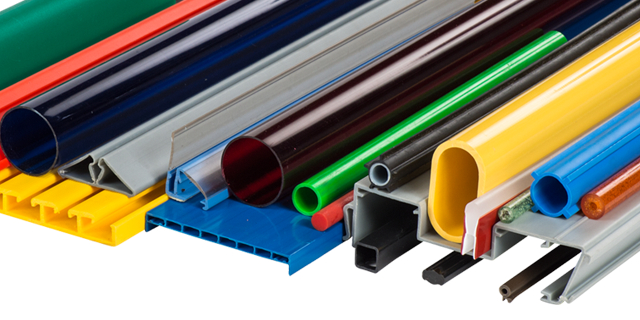
Extruded plastic rods. They tend to have better strength since they do not have any seams
4.Thermoforming
Thermoforming is a fabrication process under which thermoplastics are softened using heat and then reshaped according to product needed. Thermoforming is carried out in many different techniques such as bending plastic sheets over a strip heater and molding into the parts required via vacuum forming. Under thermoforming, tooling costs are comparatively low with other fabrication methods. It is because thermoformed parts do not need to be treated at high temperatures and pressures.
5.Die Cutting
Die to cut is one of the most efficient technique to cut plastic film and thin plastic sheets into finished parts. Some of the common plastics made via die cutting are polycarbonate film, polyester film, and HDPE sheet.
6.Lamination
Lamination is the coating of the outer surface of anything to be protected from external impact or environmental damage. Lamination also enhances the styling, appearance, and the durability of the product it is done on. Synthetic resin and film are two of the common plastic compounds used for lamination. During this process, pressure and heat are often used simultaneously to make sure that the lamination material adheres effectively to the product requiring lamination. Synthetic resin lamination is usually done to create an adhesive layer between two substrates. On the other hand, film lamination is carried out to create a plastic barrier on the exterior of the product. Common laminating materials are metal sheeting, paper, and flexible foam.
7.Welding
Welding is not only used in metal fabrication. It is also common to bond thermoplastics that cannot be properly bonded together using adhesives or other bonding techniques. Plastic welding includes fabrication methods such as hot plate welding, ultrasonic welding, speed tip welding, and hot gas welding.
8.Plastic Foaming
Plastic foaming results in plastic insulators that can be used as excellent insulators for buildings. This fabrication process uses polystyrene and polyurethane to create plastic foam. Synthetic foam lasts longer than other types of foam and has better insulation property as well.
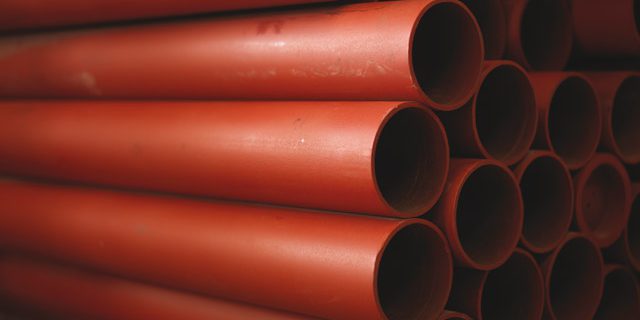
In China, there are many plastic fabrication companies. At Wayken here, we can a premium plastic machining service that is ready to cater to your plastic fabrication needs. Let it be a prototype or batch production; we are eager to hear from you and make your ideas take off from the drawing boards into reality.

